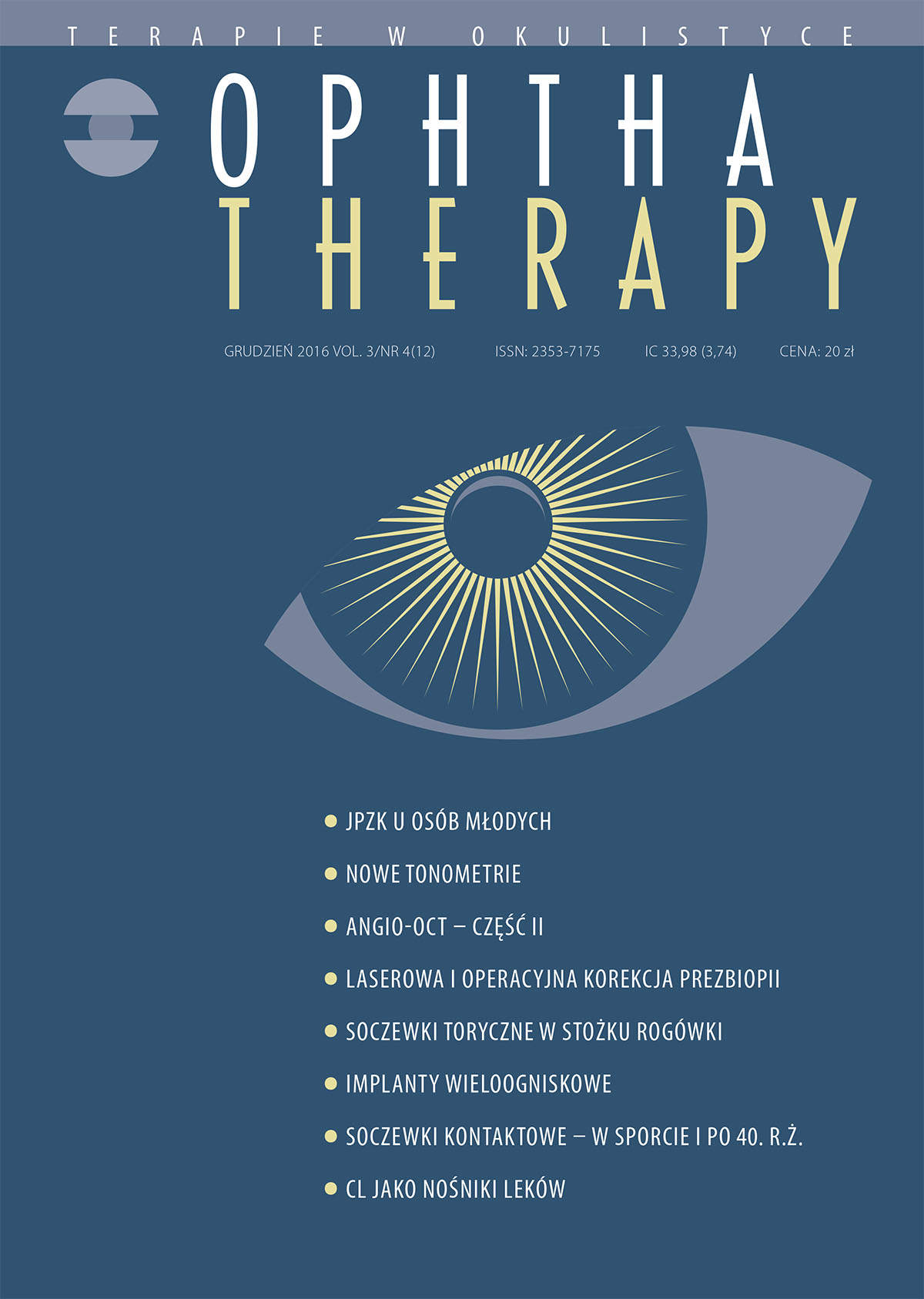Modern tonometry – more than pressure measurement
Main Article Content
Abstract
Goldmann tonometer intraocular pressure measurement was described in 1957, and is still the standard method in use. However, its limitations were the basis of numerous studies aimed to develop a new device whose dependence on factors such as the thickness and other characteristics of the cornea would be kept to a minimum. Currently, different devices are tested that do not only measure the intraocular pressurebut also define other parameters that may be useful in the daily practice of ophthalmology. These include non-contact applanation tonometer (ORA, Ocular Response Analyzer, Reichert), which performs the analysis of the viscoelastic properties of the cornea too. The principle of operation is based on a bidirectional applanation using a single stream of air, which enables assessment of the corneal resistance factor and corneal hysteresis
Downloads
Article Details

This work is licensed under a Creative Commons Attribution-NonCommercial-NoDerivatives 4.0 International License.
Copyright: © Medical Education sp. z o.o. License allowing third parties to copy and redistribute the material in any medium or format and to remix, transform, and build upon the material, provided the original work is properly cited and states its license.
Address reprint requests to: Medical Education, Marcin Kuźma (marcin.kuzma@mededu.pl)
References
2. Goldmann H, Schmidt T. Überapplanationstonometrie [Applanation tonometry]. Ophthalmologica. 1957; 134(4): 221-42.
3. Hong Y, Shoji N, Morita T et al. Comparison of corneal biomechanical properties in normal tension glaucoma patients with different visual field progression speed. International Journal of Ophthalmology. 2016; 9(7): 973-8.
4. Berk TA, Yang PT, Chan CC. Prospective comparative analysis of 4 different intraocular pressure measurement techniques and their effects on pressure readings. J Glaucoma. 2016; 25(10): e897-904.
5. Miszczyk J, Karwat-Szwabowicz M, Taranek A et al. Charakterystyka i współczesne metody pomiaru ciśnienia wewnątrzgałkowego. Magazyn Lekarza Okulisty. 2015; 9(6): 249-57.
6. Hager A, Loge K, Schroeder B et al. Effect of central corneal thickness and corneal hysteresis on tonometry as measured by dynamic contour tonometry, ocular response analyser, and Goldmann tonometry on glaucomatous eyes. J Glaucoma. 2008; 17(5): 361-5.
7. Streho M, Dariel R, Giraud JM et al. Evaluation of the Ocular Response Analyzer in ocular hypertension, glaucoma and normal populations. Prospective study in 329 eyes. J Fr Ophthalmol. 2008; 31(10): 953-60.
8. Congdon NG, Broman AT, Bandeen-Roche K et al. Central corneal thickness and corneal hysteresis associated with glaucoma damage. Am J Ophthalmol. 2006; 141(5): 868-75.
9. Mulak M, Czak W, Grobarek B et al. Pomiary ciśnienia wewnątrzgałkowego przy pomocy tonometru aplanacyjnego Goldmanna oraz tonometru rezonansowego – badania porównawcze. Magazyn Lekarza Okulisty. 2015; 9(3): 140-4.
10. Vandewalle E, Vandenbroeck S, Stalmans I et al. Comaparison of Icare, dynamic contour tonometer and ocular response analyzer with Goldmann applanation tonometer in patients with glaucoma. Eur J Ophthalmol. 2009; 19(5): 783-9.

